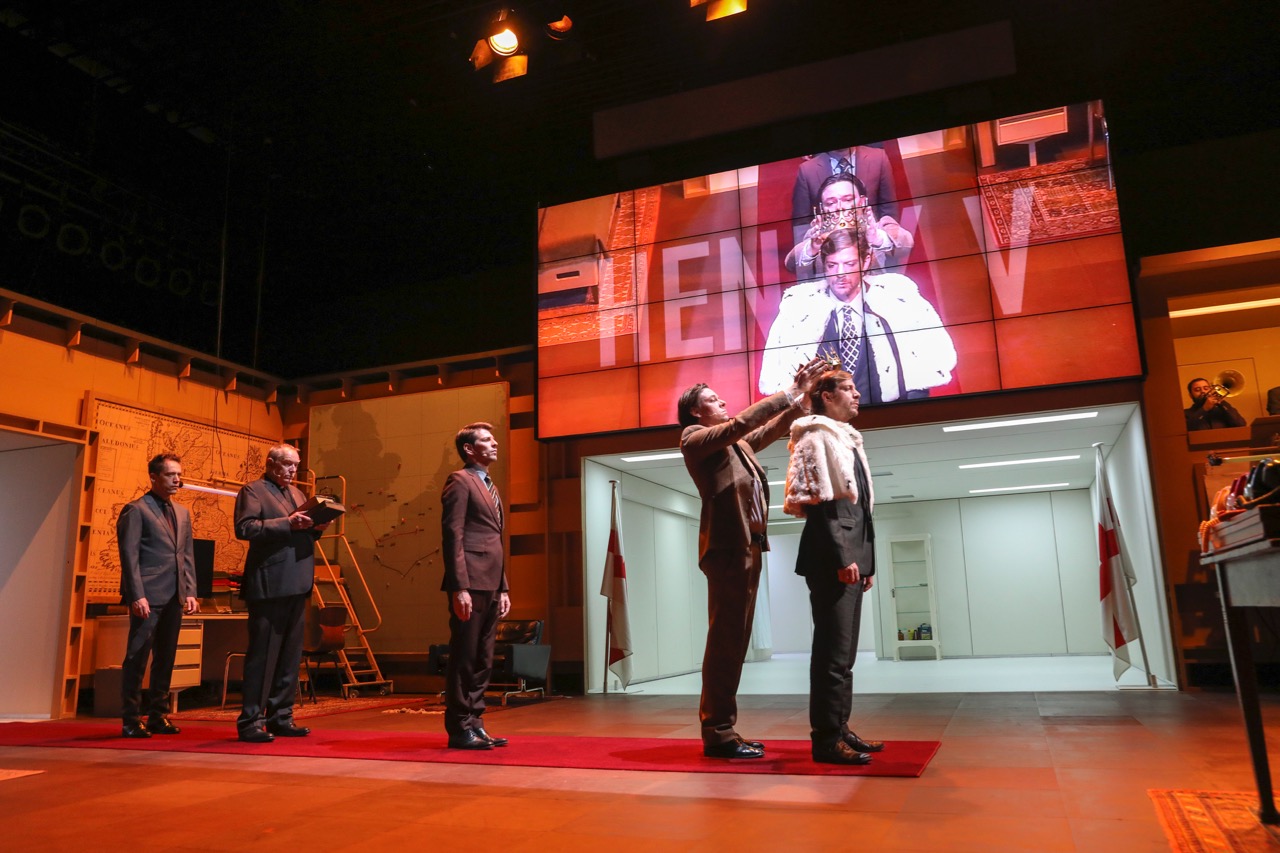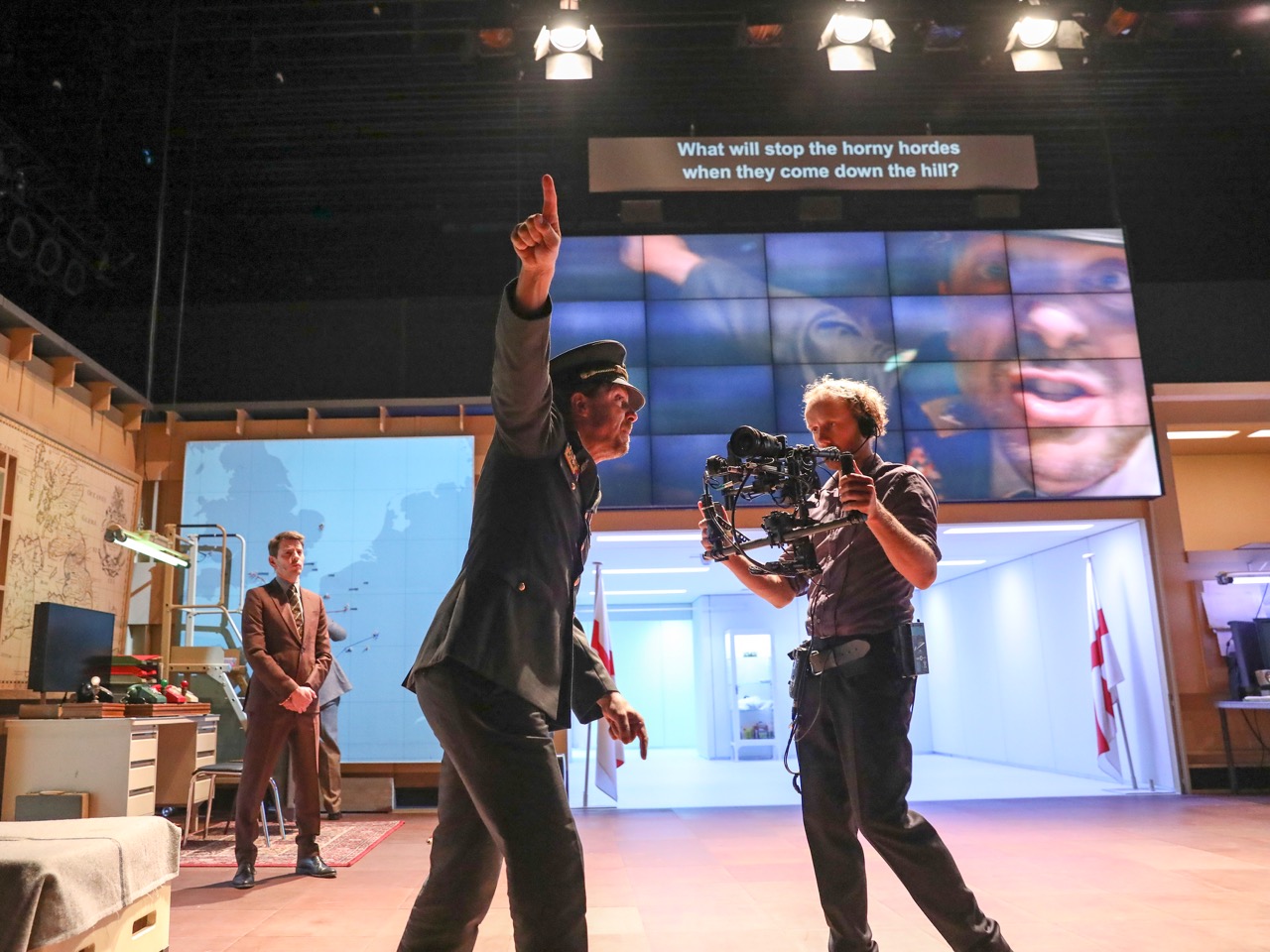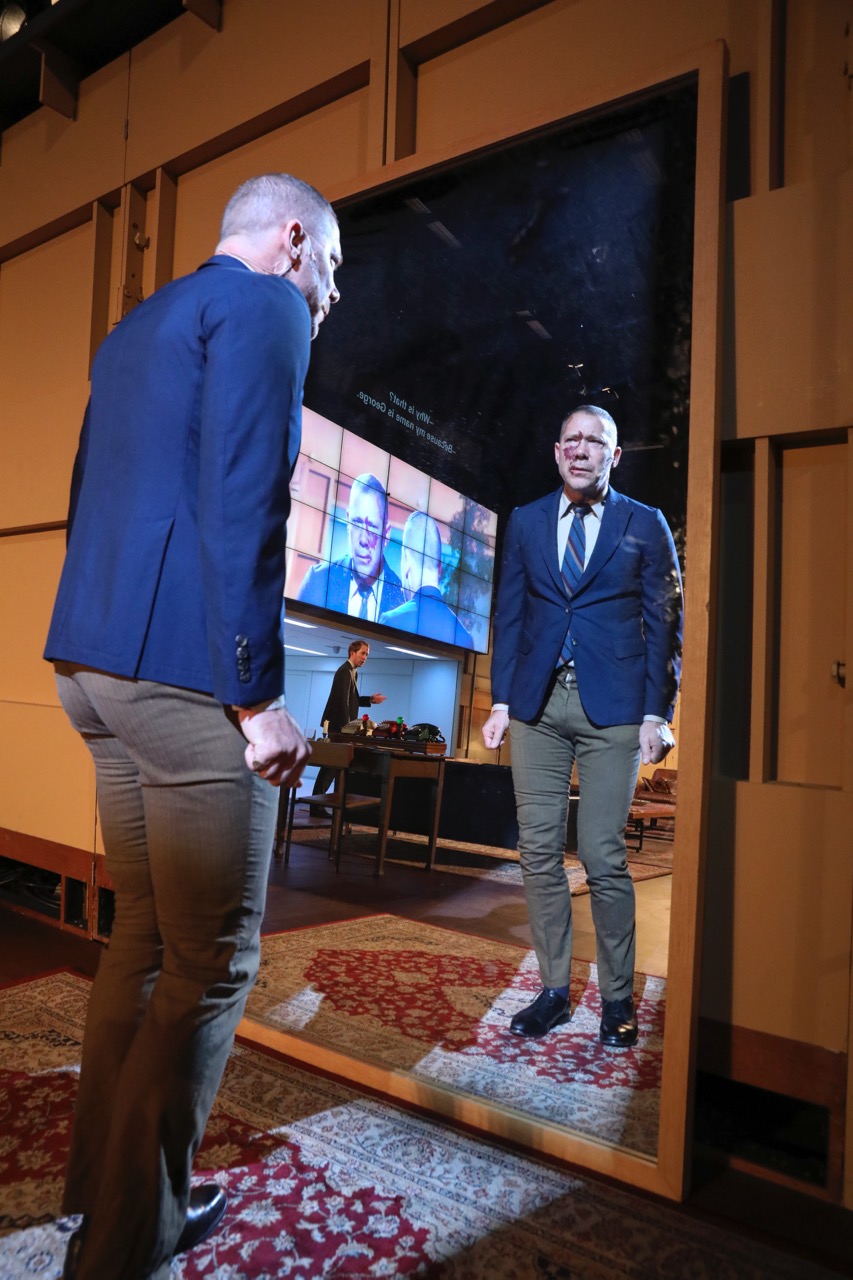 Helen Shaw
Helen Shaw
The Toneelgroep Amsterdam (and a Steadicam) stride the corridors of power in Ivo van Hove’s ambitious Shakespeare anthology.

Ivo van Hove’s Kings of War. Image courtesy the Brooklyn Academy of Music.
Kings of War, an Ivo van Hove adaptation of five history plays by William Shakespeare, Brooklyn Academy of Music, November 3–6
• • •
The New York theater is now in its Age of Ivo van Hove. The Belgian-born director has become a dominant force—everywhere we look, uptown or downtown, we see his image-driven work. In the last few years the trickle has become a roaring flood: starry transfers of London productions Antigone and A View From the Bridge; Brooklyn Academy of Music presentations of Angels in America and Roman Tragedies; New York Theatre Workshop pieces Lazarus and Scenes From a Marriage; and a glitzy Broadway version of The Crucible. What other director operates at this pace and with this level of visibility? Robert Wilson? Though Van Hove is seen in New York as an avant-gardist, he’s actually an emissary of the international mainstream. Go to London or Berlin and you’ll see that Van Hove follows a common Continental pattern: (1) a classic text or Bergman screenplay (2) played in modern dress with (3) sumptuous video design. Yet here, still, Van Hove is the lone ambassador of this luxe aesthetic. In the country of the unsubsidized theater, the man with a commission from the Barbican is king.
About half the time, Van Hove makes masterpieces. His six-hour cycle of Shakespeare’s Roman Tragedies, with its lounging theatergoers draped across sofas and munching snacks, reimagined the audience-performer barrier; his terrifying 2004 Hedda Gabler could have stopped clocks. Others, though, have been stylish disappointments: this year’s The Crucible, for instance, boasted atmosphere but no single sustained directorial thought. The typical Van Hove approach is razor-sharp suits for the men, heels for the women, but a sometimes laissez-faire attitude to the actors inside the clothes. Van Hove builds beautiful cages, but he needs tigers—fierce, independent actors like Elizabeth Marvel or Mark Strong—to make the shows work. His best pieces tend to be with his theater in the Netherlands, Toneelgroep Amsterdam, a group that (thank goodness) tours often. That company is nearly all tigers, so he can craft his cinematic mise-en-scène at leisure, while his beloved, long-lived troupe can provide the sense of cohesion, electricity, ensemble.
Happily, his Shakespeare anthology Kings of War—a compilation of Henry V, the three Henry VI histories, and Richard III just seen at BAM—was made for that proud company. Yes, in the two hours and twenty minutes before intermission, some moments feel long, but the pace of invention keeps us reliably delighted. Then comes our reward: a Richard III great enough to blot out the sun.

Ramsey Nasr in Ivo van Hove’s Kings of War. Image courtesy the Brooklyn Academy of Music.
When we talk about Van Hove, we’re also speaking about his brilliant designer and partner Jan Versweyveld. Versweyveld is endlessly inventive with stage architecture, but the texture of his pieces is almost always Euro sci-fi minimalism: Roman Tragedies took place in an Ikea-smooth lobby, A View From the Bridge lived in a Mies van der Rohe cube. Kings of War turns this aesthetic inside out. The 2001 sleekness is still there somewhere, but it’s only seen indirectly. The set we do see—mustard-yellow and cluttered with rugs, maps, and a red phone to Paris—looks like a mid-century military bunker. (It’s based on Churchill’s Cabinet War Rooms.) A bright white antechamber leads to an exit deep upstage, which leads to a ring of white hallways out of sight behind the set’s walls. Characters prowl along these hidden “corridors of power,” followed by a Steadicam operator whose footage appears on a screen looming over the main part of the stage. Effectively, then, there are two sets—one physically present and roughly realistic, the other a changeable labyrinth that (thanks to invisible segues to taped footage) can be full of soldiers one moment, a herd of sheep the next. Whichever king is winning, the set always triumphs—here is the apotheosis of Versweyveld’s attempts to integrate filmed reality into live performance.
Van Hove has said Kings of War is a meditation on leadership, and certainly the repeated coronations—each on a red carpet specially rolled out—shows power running through generations like blood down a gutter. There’s no effective intellectual thrust, though, since the plays themselves fight any other consistent perspective: Shakespeare never meant them as a series, they weren’t even written in chronological order. Roman Tragedies expressed a clear idea about crowds and power, and it needed its marathon running time to make its point. Here there’s no such animating thesis, just (just!) rollicking entertainment.
To contain five dramas inside four and a half hours, plots have been cut to the bone. Text adaptors Bart van den Eynde and Peter van Kraaij give us the “greatest hits” skeletons of both Henry V and Richard III, still perfectly recognizable in their streamlined versions—if bitterer and more “modern” in the wake of their excisions. Ramsey Nasr, for instance, plays Henry V as a shouter, a nervous Jack Kennedy in the throes of the Cuban Missile Crisis. He’s no large-hearted “Harry in the night.” And Eelco Smits plays Henry VI as a Poindexter who doesn’t quite get why people care about Agincourt. Either way, people die by the thousands.
For the Henry VI trilogy, the editors carved a new work out of Shakespeare (and possibly Marlowe’s) epic. The three Henry VIs have been reduced to just the wrangling among Suffolk (Robert de Hoog), Gloucester (Aus Greidanus Jr.), and Margaret of Anjou (Janni Goslinga) as Henry VI lets France and England slip through his fingers. Where is Joan of Arc? York upon the molehill? Ah well, c’est la guerre. Van Hove’s ruthless distillation leaves behind a kind of miniature Richard II, a model of Shakespeare’s more accomplished work about another such usurped king. Fifty years of York-versus-Lancaster struggle vanish into the edit, but in reducing events to their bare minimum, the dramaturgs make the cycle of Plantagenet brutality absolutely clear.
The cuts are clever, but the projected supertitles are strange—sometimes Shakespeare, sometimes translator Rob Klinkenberg’s approximation of what’s happening in the Dutch. “I am not in the giving vein today” becomes “I am not in the giving mood.” For English speakers, this not-quite-as-I-remembered-it quality helps release us from concerns about faithfulness and Shakespeare. How, then, is it that Richard III seems so totally definitive?

Hans Kesting in Ivo van Hove’s Kings of War. Image courtesy the Brooklyn Academy of Music.
The sublime Hans Kesting plays “crook-back Dicky” with a birthmark on his face and a pinched-in but gleeful hobble. Our sense of time passing evaporates in his delight. “I am myself alone,” he says into a mirror, and he radiates happiness about it. He snatches up a rug to use as ermine; he makes the show’s musicians (trombonists playing full blast from a balcony) throw him a parade; he calls Barack Obama on the red phone. When the leonine Kesting begins his final titanic speech as Richard, all amplification drops away, the madrigals and horror-movie underscoring (composed by Eric Sleichim) stop. In the long night before his defeat on Bosworth Field, Richard seals himself up on the now-empty set, a Hitler in his bunker. He stares at his live video image, which morphs into the bodies of his victims. And in a final coup de théâtre, he rages at us with only a fluorescent bulb burning behind him. Mad Richard goes faceless in the black—he has turned into nothing but a shape in darkness. And yet the moment sears itself into you like it was something bright.
Helen Shaw writes about theater and performance in publications such as Time Out New York, The Village Voice, TheatreForum, and diversalarums.com.